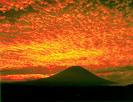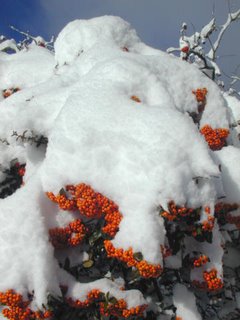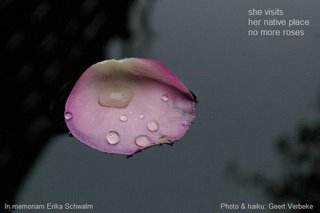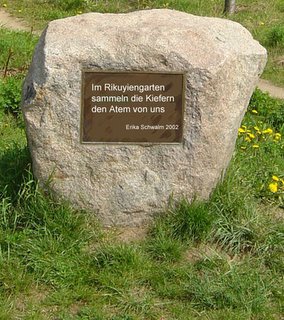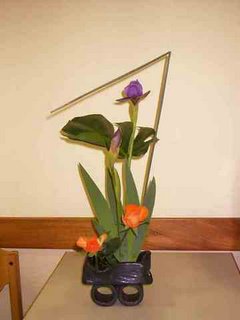:::::::::::::::::::::::::::::::::::::::::::::::::::::::::::::::::::::::::::::::::::::::::::::::::::::
Mandala, Maze
***** Location: Asia, worldwide
***** Season: Non-seasonal Topics
***** Category: Humanity
*****************************
Explanation
Labyrinth, see below
In Tibetan Buddhism, a mandala is an imaginary palace that is contemplated during meditation. Each object in the palace has significance, representing some aspect of wisdom or reminding the meditator of some guiding principle. Tradition dictates the shapes, sizes and colors of these objects. There are many different mandalas, each with different lessons to teach.
Most mandalas contain a host of deities as well as inanimate objects. An excellent overview and glossary of mandala components is available on the web.
http://www.graphics.cornell.edu/online/mandala/
xxxxxxxxxxxxxxxxxxxxxxxxxxxxx
Mandalas exist since old times in almost all cultures of our earth.
Read more about it here:
My approach to Mandala Therapy
http://happyhaiku.blogspot.com/2004/08/mandala-therapy.html
Gabi Greve
:::::::::::::::::::::::::::::::::::::::::::::::::::::::::::::::::::::::::::::::::::::::::::::::::::::
World Labyrinth Day, May 2
kigo for summer
Reference
:::::::::::::::::::::::::::::::::::::::::::::::::::::::::::::::::::::::::::::::::::::::::::::::::::::
If you are not familiar with the terms and differences between these things, check out here:
The differences are explained well. The site then discusses manadals as the bases for labyrinths. If you follow the link to "sacred geometry," you find that it is the basis for mandalas.
Ed Schwellenbach
www.crystalinks.com/labyrinths.html
Ed has looked into the matter a little more:
Also find an interesting, albeit commercial, site about sacred geometry and madalas at www.charlesgilchrist.com/SGEO/Gal902.html
Another one is
www.familytravelfiles.com/ezine/articles/747.asp
The headline reads "USA/Europe: Corn Mazes Earmark the Season." Contains locations and times for several USA mazes. Use links to find acceptable pictures of mazes at Chattanooga, Tennessee; Portsmouth, Rhode Island; and Bennington, Vermont. It seems that most mazes are
open from about the first of September to the end of October.
This site also contains links to others resources including companies that convince farmers to convert some of their cornfields to mazes for profit.
http://www.cornfieldmase.com/
provides maps to mazes in Canada, US, Mexico, UK, and Italy.
*****************************
Worldwide use
Europe
In certain cases, labyrinths could even be seasonal. Belgium and its neighbouring countries have maize labyrinths, cultivated so as to be week-end attractions when the maize has reached a certain height -- I remember my colleagues in the office last autumn showing pictures of their children there.
These pages (from France) give an impression. I found similar references to maize labyrinths in Germany and Switzerland.
http://www.labyrinthus.com/laby_sortileges_1.php
http://www.labyrinthus.com/en_images_2.php
Isabelle Prondzynski
...........................................................................
More than in other countries, Switzerland seems to embrace the appropriateness of labyrinths in public places, of which more than 50 have been established in recent years, in addition to dozens of other on private property.
Look at many more samples here:
http://www.crystalinks.com/labyrinths2.html
......................................................................
England
There has been a seasonal labyrinth in the summer just a few milesaway from where I live in England. They call it "The Maize Maze" :
walking the maize maze amazed walking
Eryu
(See below for more about the labyrinth.)
xxxxxxxxxxxxxxxxxxxxxxxxxxxxxxx
India
Many traditional Indian Mandalas have traditional names associated with the deities.
The Mandalas are associated with a Mantram and sometimes even a Nyaasam [ Meta Elucidations in Mantrams ]
Various Indian Rituals involve making Mandalas of various types with different materials.
Every morning in most Indian[ Hindu Buddhist Jain] houses a Kolam [ a mandala design] is drawn at dawn and even at dusk in some places. Mandalas are also called Chakras [ Wheels]. Mandalas are considered representation of Devi [ Laksmi .Kaali Durga etc. ] in contrast to Linga[shiva] and Saalagrama[ Vishnu]
Actually a Mandala represents a unique Cosmos we may.
Vishnu Mandala ~ Shakthi Mandala ~ Rudra Mandala ~ Vighneswara Mandala ~ Buddha Mandala ~
Rudra Mandala ~
the flame resonates
in fragrant silences
Padma Mandala
rahasyam pratyaksham Padmini
Padma-Sambhavi
The Padma Mandala
mystery manifests lotus faced Devi
abloom on a lotus
Padma ~ Lotus, Lakshmi ~
"Mandala" is a very difficult word to translate from Sanskrit into another language as i see and as you surely must be aware too.
Narayanan, 2005
*****************************
Things found on the way
Mandala, a Magazine about Tibetan Art

http://www.mandalamagazine.org/
................................ More Mandala Sites
Center of the Circle (contains many links) Mandala information by Jytte Hansen
Building a Sand Mandala The Rossi Collection of early Tibetan mandalas
Mandala: Buddhist Tantric Diagrams
Houston Chronicle article : The Art of Tibetan Sand Painting
StarWheels (futuristic mandala paintings) Mandala Art
The Mandala Project
The World Mandala Project
The MandalaZone
Some mandala are available as drawings for coloring:
nuri-e, nurie, nuri e ぬりえ【塗(り)絵 / 塗(絵】
Ausmalvorlagen
. nuri-e 塗り絵 - 塗絵 - ぬりえ drawing for coloring .
.....................................................................................................
Buddhist Mandalas in Japan
Kongookai Mandala, Taizookai Mandala
Mandalas are a type of Buddhist painting especially common in the Esoteric sect of Japanese Buddhism, which has many secret, mystical rituals. According to the beliefs of this sect, truth can not be expressed through just words but requires illustrations such as paintings. One such type of painting is a mandala.
http://www.onmarkproductions.com/html/mandala1.shtml
xxxxxxxxxxxxxxxxxxxxxxxxxxxxxxxxxxxxxxx
....................... Crop Circles, a sort of Mandala
Very often seen in England
http://www.temporarytemples.co.uk/default.html
http://www.temporarytemples.co.uk/imagelib/A-2001.html
With bizarre references to UFOs, science fiction films and what not.
http://www.circlemakers.org/totc2004.html
http://www.cropcircleconnector.com/index2.html
*****************************
HAIKU
............................... autumn mandala -
............................... in my garden
............................... with pure joy

Read many more Nature Mandala Haiku here:
http://happyhaiku.blogspot.com/2004/08/mandala.html
Gabi Greve
xxxxxxxxxxxxxxxxxxxxxxxxxxxxxxxxxxxxxxxx
an old mandala
dervish dancers
by night
Geert Verbeke
Look at the picture here
http://home.alc.co.jp/db/owa/ph_detail?photo_sn_in=1537
xxxxxxxxxxxxxxxxxxxxxxxxxxxxxxxxxxxx
floral mandala
has journeyed to her center
tranquil and serene
Look at a beautiful white Water Lily Mandala
http://home.alc.co.jp/db/owa/PH_detail?photo_sn_in=1489
xxxxxxxxxxxxxxxxxxxxxxxxxxxxx
mandala -
my footsteps' path
fases away
© Gabriela Fleitas, 2005
:::::::::::::::::::::::::::::::::::::::::::::::::::::::::::::::::::::::::::::::::::::::::::::::::::::
From http://www.wonderhaikuworlds.com/index.php
Narayanan Raghunathan
Click at the LINKs to see the mandala !

Sthaanu Datta Mandala
Agni Nyaasa Mandala
http://www.wonderhaikuworlds.com/haikufromphoto.php?image=28
Datta Guru Mandala
http://www.wonderhaikuworlds.com/haikufromphoto.php?image=71
Naaraayaneeyam~
http://www.wonderhaikuworlds.com/viewdetail-haiga.php?post=65
spanda-grham
aadi-madyaantha viheenam
shaashvatham sthiram
[Sanskrit]
the home of spandas
without beginnings middles ends
eternal indestructible
Haiku and Image by Narayanan Raghunathan
..... .....
maha-mantra-mandalam
saakshi-saakshaatkaaram
parabrahma tatvam
[Sanskrit]
the great mandala of mantras
the witness in true fullfillment
the knowledge of brahman
Haiku and Image by Narayanan Raghunathan
*****************************
Related words
***** Labyrinth .. -non-seasonal topic . Also called maze.
In Europe, many mazes are often made of maize. People walk them in summer and autumn.
Maize as a plant is a kigo for autumn in Japan, when it is ripe and ready to eat. So a Maize Maze could be considered a kigo for Autum, according to the plant.
office show --
wee jack in the labyrinth
become wallpaper
Isabelle Prondzynski
............................................................
busy bee -
in the pollen bed
a labyrinth
Carol Raisfeld
Look at the Photo here
http://home.alc.co.jp/db/owa/PH_detail?photo_sn_in=708
.................................................................
corn maze
from a bird's eye view
no exit
nangini
Look at the Photo and more haiku here
http://home.alc.co.jp/db/owa/PH_detail?photo_sn_in=1517
xxxxxxxxxxxxxxxxxxxxxxxxxxxxx
green labyrinths
cover the infinite sky ~
twittering birds ~
Narayanan Raghunathan, India Saijiki
Read the full sequence HERE !
:::::::::::::::::::::::::::::::::::::::::::::::::::::::::::::::::::::::::::::::::::::::::::::::::::::::::::::::::::::::::::
[ . BACK to DARUMA MUSEUM TOP . ]
[ . BACK to WORLDKIGO . TOP . ]
:::::::::::::::::::::::::::::::::::::::::::::::::::::::::::::::::::::::::::::::::::::::::::::::::::::::::::::::::::::::::::

